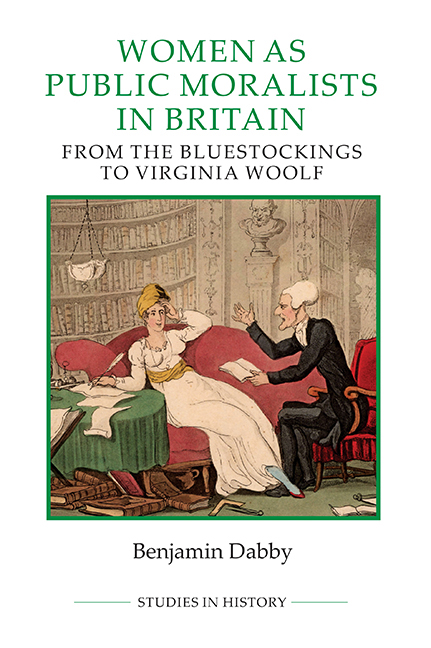Book contents
- Frontmatter
- Dedication
- Contents
- List of illustrations
- Acknowledgements
- Abbreviations
- Introduction
- PART I HISTORY AND THE PRESENT
- PART II LITERATURE, ART AND LIFE
- 4 Anna Jameson, cultural authority and public moralism
- 5 Beautiful and useful arts in Hannah Lawrance's cultural criticism
- 6 Marian Evans's cultural criticism in the context of women's public moralism
- PART III CHANGE AND CONTINUITY FROM THE FIN-DESIÈCLE TO MODERNITY
- The contexts of conclusions
- Bibliography
- Index
6 - Marian Evans's cultural criticism in the context of women's public moralism
from PART II - LITERATURE, ART AND LIFE
Published online by Cambridge University Press: 25 October 2017
- Frontmatter
- Dedication
- Contents
- List of illustrations
- Acknowledgements
- Abbreviations
- Introduction
- PART I HISTORY AND THE PRESENT
- PART II LITERATURE, ART AND LIFE
- 4 Anna Jameson, cultural authority and public moralism
- 5 Beautiful and useful arts in Hannah Lawrance's cultural criticism
- 6 Marian Evans's cultural criticism in the context of women's public moralism
- PART III CHANGE AND CONTINUITY FROM THE FIN-DESIÈCLE TO MODERNITY
- The contexts of conclusions
- Bibliography
- Index
Summary
George Eliot's (1819–80) readiness to critique women writers has led some scholars to view her as an anomalous figure who stood at the edge of nineteenth-century women's literary traditions. In the tradition of women of letters, however, Eliot's critical output at mid-century illustrates a new attempt to degender women's and men's cultural criticism in order to free it from egoism in the pursuit of moral truth. It also shows that she located herself in a tradition of eighteenth-century moralising women whose positive contribution to public life rested on their degendered expertise. Initially Eliot viewed egoism as a typically male fault, exemplified in Anna Jameson's parody of fraudulent male connoisseurs. In this context Eliot saw women's potential to act as cultural leaders by practising truly disinterested criticism which would assess novels and paintings by the extent to which they fostered viewers’ sympathy. This was informed by Eliot's understanding of history, in which women's exclusion from the traditional walk of men's public lives was the basis of their intellectual freedom. This freedom explained the conventional belief in women's instinctive sympathy but Eliot argued that it was just as accessible to men if they were freed from their egoism. The danger to women in conditions of greater social equality was that they would lose their ready sympathy if they emulated their male peers without question. Viewed in the tradition of women moralists, Eliot's criticism shows how it was possible by mid-century for literary women to challenge conventional gender stereotypes whilst reinvigorating wider claims for the press as a source of disinterested moral instruction. To mark this repositioning of Eliot in the gendered context of nineteenth-century public moralism, she is referred to in this chapter by her name: Mary Ann (and, later, Marian) Evans.
Evans's early intellectual development in Coventry illustrates how the mixed sociability of literary salons in nineteenth-century Britain was often crucial to the success of women of letters because they were open to individuals from a range of social and political backgrounds. It was from here that she was able to secure access to work in London, where she developed a theory of moral realism which built on Anna Jameson's criticism of the 1830s, and held both sexes to a higher standard of degendered and thereby disinterested cultural criticism.
- Type
- Chapter
- Information
- Women as Public Moralists in BritainFrom the Bluestockings to Virginia Woolf, pp. 155 - 174Publisher: Boydell & BrewerPrint publication year: 2017

